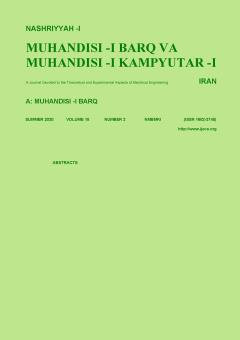-
-
List of Articles
-
Open Access Article
1 - A Thermal Equivalent Circuit for Thermal Analysis of Power Transformers under Harmonic Loads
m. mikhak B. Rezaeealam m. jafarboland v. ebrahimian m. asgari -
Open Access Article
2 - Adaptive Non-singular Terminal Sliding Mode Control Based On Disturbance Observer for the Microelectromechanical Vibratory Gyroscope Contro
M. R. Soltanpour -
Open Access Article
3 - A New Non-Isolated Buck-Boost DC-DC Converter with Wide Voltage Conversion Range
M. Heydari h. khoramikia Seyed Mohammad Dehghan -
Open Access Article
4 - A Reduced Data Transfer Scheme in Distributed Secondary Control of Microgrid Using Aperiodic Sampling Method
Mohyedin Ganjian-Abukheili مجید شهابی Qobad Shafiee -
Open Access Article
5 - Coordinated Design of Power System Stabilizer and Variable Impedance Devices to Increase Damping of Inter-Area Modes Using Genetic Algorithm
m. zamani G. Shahgholian -
Open Access Article
6 - Multi-Stage Restoration of Electrical Distribution Networks
s. ghasemi A. Khodabakhshian R. Hooshmand -
Open Access Article
7 - Optimal Allocation of Battery Energy Storage in Distribution Network for Maximum Profitability
mohammad rasol jannesar mohsen kalantar A. R. Sedighi -
Open Access Article
8 - Robust Optimal Control of Lateral Vehicle’s Dynamics with Adaptive Dynamic Programming Approach
Mohammad Reza Satouri Abolhassan Razminia Arash Marashian
-
The rights to this website are owned by the Raimag Press Management System.
Copyright © 2017-2025







